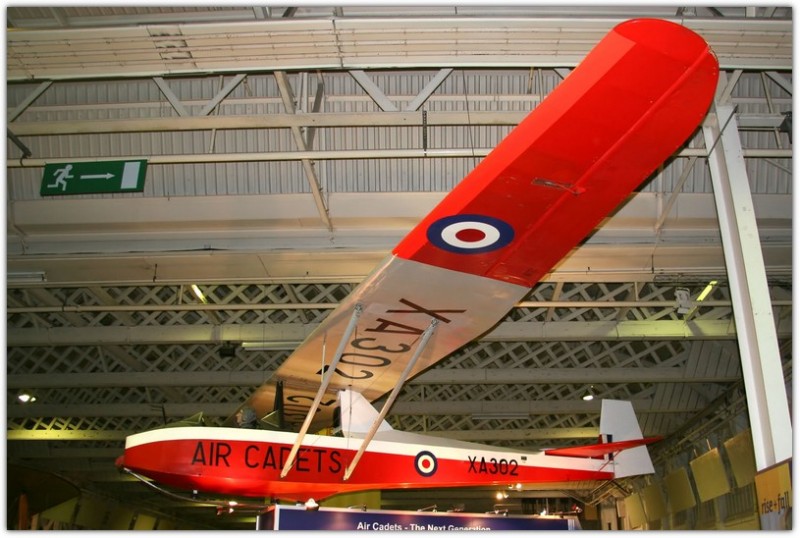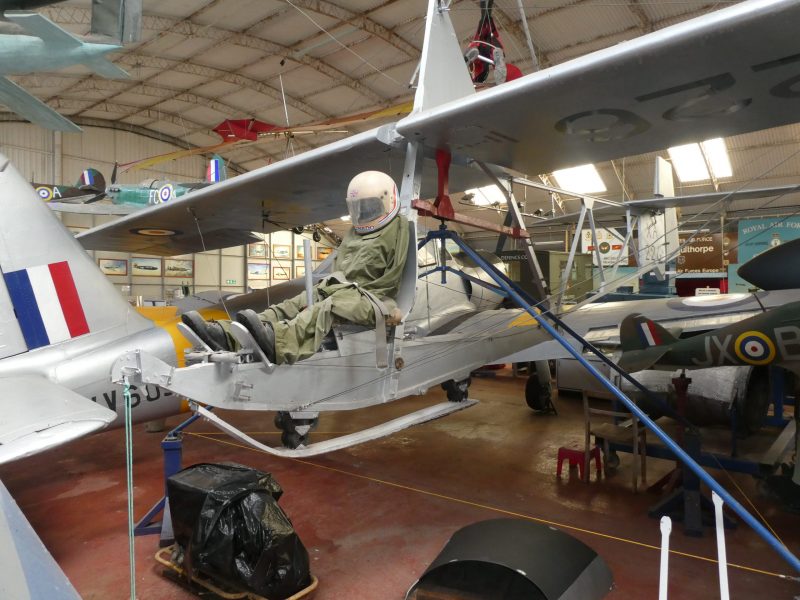Flying on the ground – Part II …
Gliding …
Back in the 1970s, I was a member of the Combined Cadet Force at school. As an aviation buff, I obviously opted to join the RAF section. One of the benefits of this was the opportunity to visit RAF Stations for a week at Easter, another was a chance to apply for gliding courses at RAF Swanton Morley.
I was successful in my application and in August 1971 my parents dropped me off at the gates on the Sunday evening. After breakfast taken in the mess on the Monday morning we attended a briefing about what we would be doing. Around mid morning we headed off to the hangar to get the gliders out for the day. These were then towed to the far side of the airfield and gliding commenced. I was lucky enough to be one of the first to fly (I think that my surname helped!) and managed four flights. Unlike modern gliders the duration of each flight from our winch launch was two to three minutes. A modern glider can manage 15 to 20 from the same launch, the Kirby Cadet (officially they are known as Slingsby Cadet TX3s, but our instructors called them Kirby Cadets, so we did too!) didn’t quite have the same sleek lines! Then the weather closed in and we had to stop for the day.
Slingsby Cadet TX3
The next day was similar, except that I did not get a flight, and it was the wind that stopped us flying, on the Wednesday we couldn’t fly at all again due to the wind, Thursday we fared better and managed a whole morning and I was able to complete another four flights. Friday we managed to start late and I got another three flights, all due to wind again.
I applied for another space on a course, and was once again successful, this time turning up at RAF Swanton Morley in April 1972. Yet again I managed very few flights, this time more due to the weather than the wind. I don’t think that I have ever seen so many educational films, or visited Norwich Castle so much.
One glider that the unit at Swanton Morley didn’t have was a Grasshopper. There is one of these in the Norfolk and Suffolk Aviation Museum and with it we could have flown more. It has the same gliding characteristics as the Cadet, but is a single seater.
Grasshopper at NASAM
How would this have helped? Our glider is displayed semi suspended on a “rig”. This allows the glider to be taken outside, on the rig, in higher winds than it is safe to glide in “for real”. The rig is pointed into wind and the glider, whilst safely tethered to the ground can be made to perform basic, and limited, manoeuvres. This would have enabled us to learn the basics whilst grounded from real flying, thus being able to make better use of the limited flying time.
Later in 1972, I was awarded a Flying Scholarship, learning to fly Cessna 150s at Cambridge Airport, that ended my gliding aspirations.
Author:: Steve Bell
Can you help the Museum
In these financially constrained time, we are grateful for any help that we can get in keeping the museum running. Despite the lockdown and the lack of footfall through the museum, we still have ongoing costs in maintenance, insurance and utilities and there are two ways in which you can help. Either by becoming a museum member or by making a donation.
To make a donation to the Norfolk and Suffolk Aviation Museum please click on the button here. To become a member of the Norfolk and Suffolk Aviation Museum, and benefit from what membership can bring, even if you do not live locally, please follow this link to our main website to see the full details of membership.
To become a member of the Norfolk and Suffolk Aviation Museum, and benefit from what membership can bring, even if you do not live locally, please follow this link to our main website to see the full details of membership.
We thank you for any help given.
Follow us on Social Media, email us or visit our Main Website.




Good article Steve.